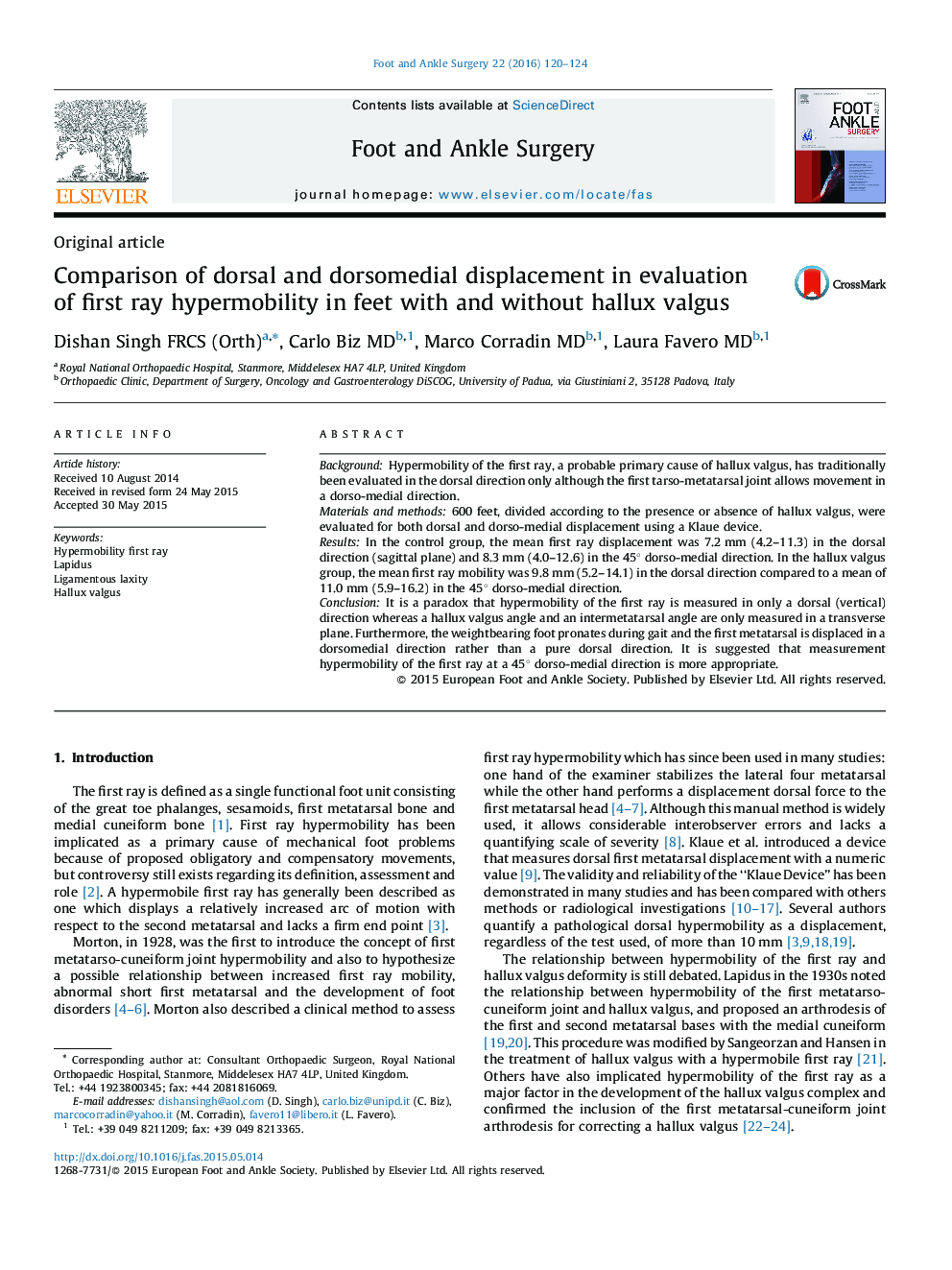| کد مقاله | کد نشریه | سال انتشار | مقاله انگلیسی | نسخه تمام متن |
|---|---|---|---|---|
| 4054406 | 1265522 | 2016 | 5 صفحه PDF | دانلود رایگان |

• Hypermobility of the first ray has been implicated as a cause of foot problems.
• This condition has been traditionally assessed in the sagittal plane.
• Hallux valgus deformity is commonly evaluated in transversal plane.
• First ray displacement in dorsal and 45° dorsomedial direction were evaluated in patients with and without halux valgus.
• A new group of patients who only have hypermobility in a 45° plane is identified.
BackgroundHypermobility of the first ray, a probable primary cause of hallux valgus, has traditionally been evaluated in the dorsal direction only although the first tarso-metatarsal joint allows movement in a dorso-medial direction.Materials and methods600 feet, divided according to the presence or absence of hallux valgus, were evaluated for both dorsal and dorso-medial displacement using a Klaue device.ResultsIn the control group, the mean first ray displacement was 7.2 mm (4.2–11.3) in the dorsal direction (sagittal plane) and 8.3 mm (4.0–12.6) in the 45° dorso-medial direction. In the hallux valgus group, the mean first ray mobility was 9.8 mm (5.2–14.1) in the dorsal direction compared to a mean of 11.0 mm (5.9–16.2) in the 45° dorso-medial direction.ConclusionIt is a paradox that hypermobility of the first ray is measured in only a dorsal (vertical) direction whereas a hallux valgus angle and an intermetatarsal angle are only measured in a transverse plane. Furthermore, the weightbearing foot pronates during gait and the first metatarsal is displaced in a dorsomedial direction rather than a pure dorsal direction. It is suggested that measurement hypermobility of the first ray at a 45° dorso-medial direction is more appropriate.
Journal: Foot and Ankle Surgery - Volume 22, Issue 2, June 2016, Pages 120–124